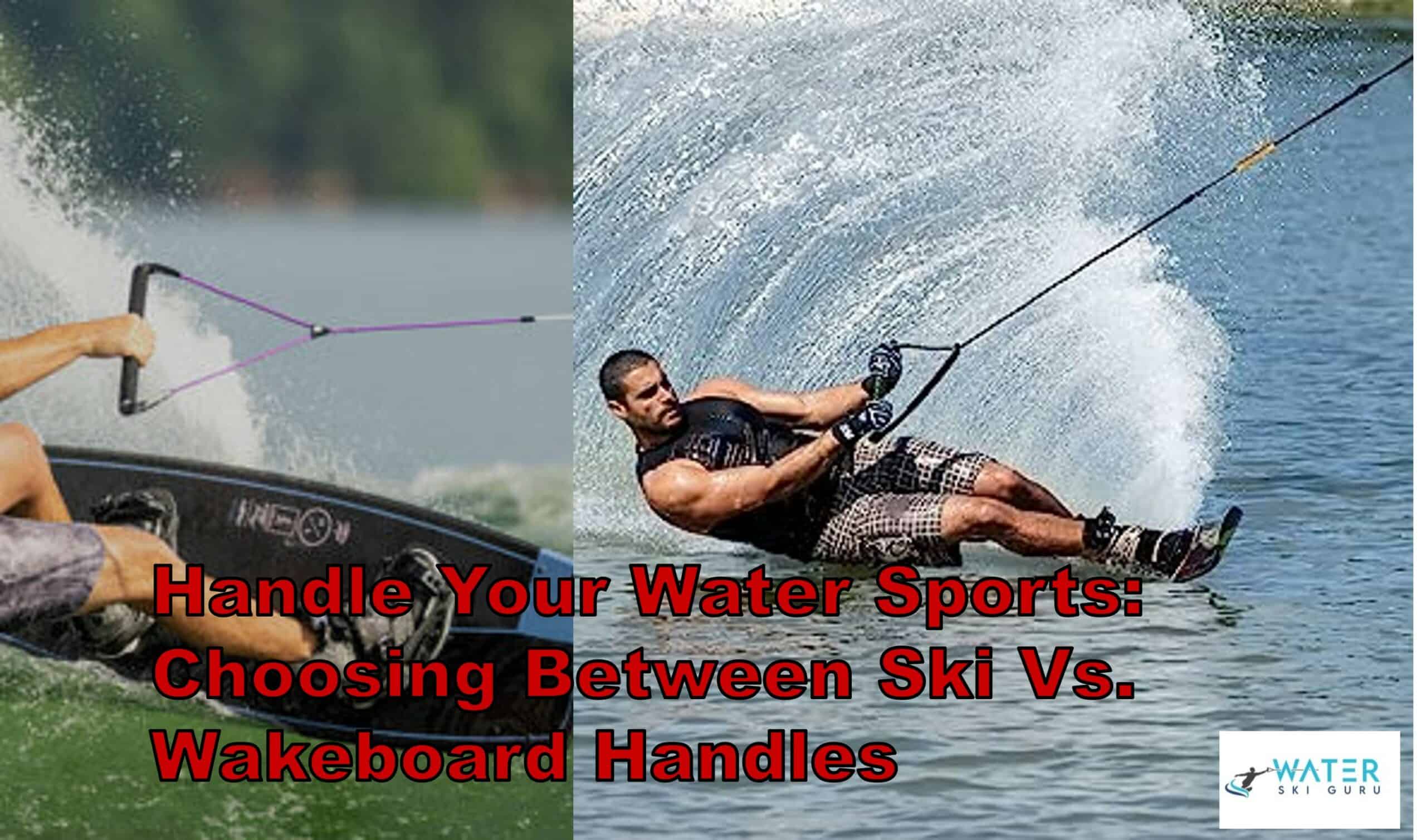As the saying goes, ‘you can’t judge a book by its cover.’
The same can be said for watersports handles. While they may all look alike at first glance, there are significant differences between ski and wakeboard handles that can greatly impact your performance and enjoyment on the water.
Whether you’re a seasoned pro or just starting out, choosing the right handle is crucial in mastering your water sports.
When it comes to choosing between ski and wakeboard handles, it’s important to understand the material differences, size and shape options, and additional features available.
With this knowledge, you can make an informed decision and handle your water sports with ease. So, whether you’re hitting the slopes or shredding the waves, read on to discover how to choose the perfect handle for your needs.
Material Differences
If you’re looking to buy a new handle, keep in mind that waterski handles are made of tough rubber while wakeboard handles are made of a softer material. This is because wakeboarders need more comfort and flexibility in their grips, especially when performing tricks and spins.
On the other hand, waterski handles are designed to withstand high speeds and rough waters, so they need to be more durable. Despite their different materials, both types of handles offer strong grip strength to help you stay in control of the rope and your movements.
However, waterski handles can be hard on the hands, which is why many skiers choose to wear gloves. Wakeboarders, on the other hand, often prefer to grip the handle with their bare hands. Ultimately, the choice between durability and comfort depends on your personal preference and the type of water sport you plan on doing.
Size and Shape
You wanna consider the size and shape of the handle when selecting the right equipment for your performance, as the diameter and width can greatly impact your grip and control during spins and handle passes.
For slalom skiing, narrower handles are preferred for their reduced weight, but skiers may opt for wider handles for greater grip control during tricks.
Wakeboard handles are wider than slalom handles, providing riders more area to grab during spins and handle passes. The common diameter for wakeboard handles is about 1 inch, which is comfortable for most riders.
Grip preferences also play a part in choosing the right handle. Most wakeboard riders don’t wear gloves when using a wakeboard handle, due to the softer material of the grip. However, waterskiers often wear gloves to protect their hands from the tough rubber grip on waterski handles.
Speed limitations are also important to consider. Waterski handles are used for skiing up to 36 mph through the slalom course, while wakeboard handles are used at slower boat speeds.
By selecting a handle with the appropriate size and shape, you can ensure your grip and control during water sports is optimized for your performance.
Additional Features
Consider the built-in flotation and other additional features when shopping for a handle for your preferred water sport. Wakeboard handles typically have flotation built-in to prevent sinking, while slalom handles do not. Additionally, consider the durability vs. comfort of the handle grip material.
Waterski handle grips are made of tough rubber and can be hard on the hands, while wakeboard handle grips are made of a softer material for added comfort during long rides.
Speed limitations vs. versatility should also be considered when choosing a handle for your water sport. Slalom handles are narrower to reduce weight and are typically used for skiing up to 36 mph through the slalom course, whereas wakeboard handles are wider and used at slower boat speeds.
Wakeboard handles also offer more versatility for tricks and handle passes due to their wider size and grip area. Ultimately, selecting a handle that offers the right balance of durability, comfort, speed limitations, and versatility will enhance your experience on the water.
Frequently Asked Questions
What is the average lifespan of a waterski handle or wakeboard handle?
Maintaining handles can prolong their lifespan. Common handle materials for waterski and wakeboard handles include rubber and softer materials. With proper care and usage, handles can last for several seasons of water sports enjoyment.
Can wakeboard handles be used for waterskiing and vice versa?
Did you know that only 23% of wakeboarders use gloves while riding? Handle compatibility varies based on skill level requirements, but using a wakeboard handle for waterskiing or vice versa is not recommended for optimal performance.
Are there any handles that are specifically designed for use in both waterskiing and wakeboarding?
While there are no handles specifically designed for both waterskiing and wakeboarding, some shared use handles exist. Common handle features include durability and comfort, but the downside is that they may not be optimized for either sport.
How do I know which diameter of slalom handle is right for me?
Choosing the right diameter for your slalom handle can make or break your skiing experience. The benefits of grip material on slalom handles are crucial, as is properly maintaining your ski/wakeboard handle for optimal performance. Don’t settle for anything less than perfect.
Are there any eco-friendly handle options available for water sports enthusiasts?
Looking for sustainable options for your water sports handles? Consider eco-friendly handle materials like recycled plastic or bamboo. These materials are durable, lightweight, and environmentally friendly, making them a great choice for conscious consumers.
Conclusion
Congratulations! You now have a better understanding of the differences between waterski handles and wakeboard handles. By choosing the right handle, you can enhance your performance and ensure a more enjoyable experience on the water.
One interesting statistic to note is that the diameter of the handle can greatly impact your grip and control. A larger diameter handle may provide more surface area to hold onto, but it can also make it more difficult to maneuver the rope. On the other hand, a smaller diameter handle can provide better control and easier maneuverability, but may be more difficult to grip for those with larger hands.
Remember to consider your personal preferences and needs when choosing a handle, and don’t be afraid to try out different options until you find the perfect fit.
With the right handle, you can handle your water sports with confidence and ease. Happy skiing and wakeboarding!

